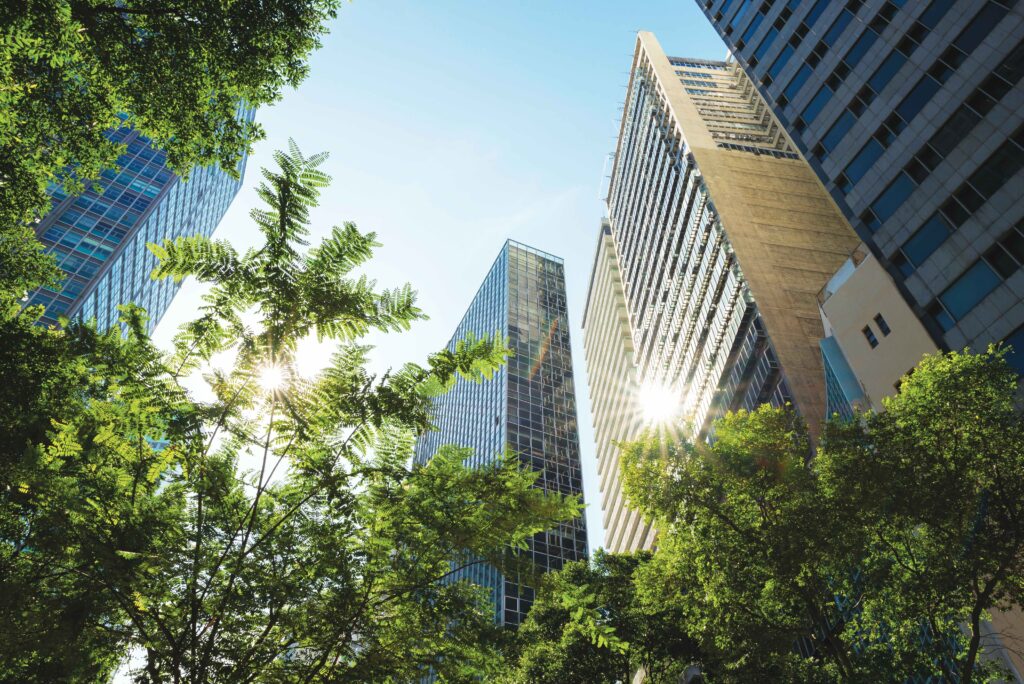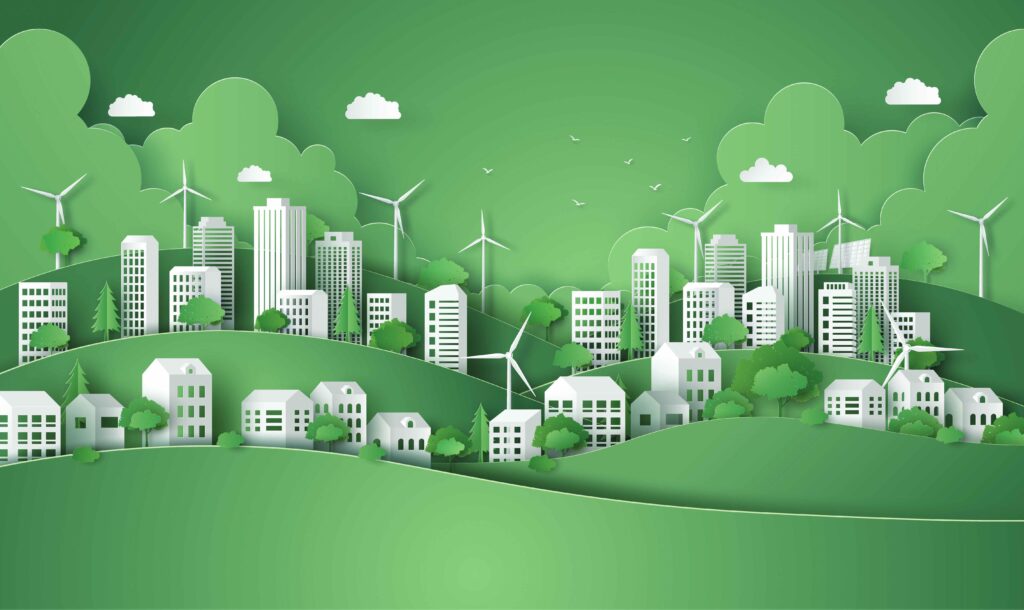
Green Business Certification Inc. (GBCI) and the US Green Building Council (USGBC) have been instrumental in promoting sustainable building practices across the country, facilitating certifications like LEED (Leadership in Energy and Environmental Design) for various projects. Mili Majumdar, Managing Director, GBCI India and Senior Vice President, Innovation and Research, U.S Green Building Council USA, shares her experiences working on “noteworthy projects I have been involved in” with Clean India Journal.
The TERI Bangalore facility exemplifies the principles of high-performance building design, emphasizing solar energy utilization and daylighting to reduce energy consumption. This is not a certified project but presents utilization of passive measures to optimise energy consumption.
Another one is in 2019, Dharampal Satyapal Group (DS Group) achieved LEED Platinum certification for its DS Group Headquarters in Noida, Uttar Pradesh, India, under LEED for Operations and Maintenance. The company later attained LEED Zero Carbon certification in July 2023, marking a significant achievement in reaching net zero carbon status.
Which are the areas in a facility essentially require green solutions for maintenance?
In the DS Group Headquarters, several areas require green solutions for maintenance to ensure sustainable operations and resource efficiency. These include:
• Integration and regular upkeep of advanced solar panels and technologies to maximize captive solar capacity and reduce reliance on conventional energy sources.
• Maintenance of electronically commutated fans in air handling units to enhance energy efficiency and optimize ventilation systems.
• Regular servicing of wastewater treatment systems, such as sequencing batch reactors, to ensure effective treatment of wastewater and minimize environmental impact.
• Maintenance and calibration of photohydroionization technology to improve indoor air quality by reducing airborne contaminants and pollutants.
• Automation of high-energy-consuming machines to optimize energy usage and reduce operational costs, coupled with the promotion of electric vehicles for transportation to minimize carbon emissions and promote sustainable mobility solutions.

What according to you is green maintenance?
Green maintenance is an approach to the ongoing care and upkeep of a building or facility that prioritizes environmental sustainability, energy efficiency, and the preservation of eco-friendly features. It involves adopting practices that not only ensure the longevity and optimal functioning of the built environment but also minimize its ecological footprint.
Green maintenance is a process that considers the entire lifecycle of a building, from its initial design and construction to its ongoing operations. It seeks to create a harmonious balance between the built environment and nature, ensuring that buildings not only meet high-performance standards but also contribute positively to the broader goals of environmental conservation and sustainable living.
During the facility construction stage what aspects should be considered to ensure that the green practices can be implemented without a challenge?
Implementing green practices during the facility construction stage is important to the long-term sustainability and environmental performance of a building. Consideration of aspects like integration of holistic design, prioritizing existing ecosystem preservation during site planning and selection, usage of high-performance energy efficient material, water conservation strategy, waste management planning, integrating performance monitoring systems can ensure that green practices are seamlessly integrated into the construction process.
In the existing buildings that have received the green certifications, what challenges do you foresee with the green maintenance?
In existing buildings with green certifications, several challenges may be encountered:
• Ageing Infrastructure: Over time, infrastructure components such as HVAC systems, lighting fixtures, and renewable energy installations may become less efficient. Upgrading these systems to maintain their green performance standards can be challenging and require significant investment.
• Technology Upgrades: As green building technologies evolve, older buildings may struggle to keep up with the latest advancements. Retrofitting new technologies into existing structures while maintaining green certification standards can be complex and costly.
• Changing Regulations: Environmental regulations and building codes are subject to change over time. Ensuring ongoing compliance with evolving standards may require updates or modifications to existing green features, posing challenges for building owners and managers.
• Education and Sensitization: Occupants of green-certified buildings need to understand how their actions impact energy usage, water consumption, and overall sustainability. Ongoing education and sensitization efforts are essential to encourage environmentally friendly behaviours and ensure optimal building performance.
• Addressing these challenges requires proactive management strategies, ongoing maintenance efforts, and a commitment to sustainability principles throughout the lifecycle of the building.

In terms of sustainability, water conservation, energy efficiency, and net zero what all has been introduced in this facility?
DS Group Headquarters implemented various sustainability features, including – 200% increase in captive solar capacity through advanced solar panels, environmentally friendly changes such as electronically commutated fans and wastewater treatment, achieving a 25% decrease in energy usage, attaining net zero carbon status through a comprehensive approach that includes energy efficiency, solar power, and reduced carbon emissions from transportation.
On the other hand, TERI Bangalore incorporated sustainable features such as extensive use of solar energy and daylighting to reduce electricity consumption, innovative air filtration strategies, including hydroponics, for enhanced indoor air quality, meeting recommended parameters for temperature, humidity, and air quality. These initiatives have resulted in remarkable reductions in energy consumption and contributed to improvements in occupant health and well-being.
Any other project?
I’d like to highlight another remarkable project – Flipkart Group’s distribution and warehousing facilities. Flipkart achieved TRUE Gold certification for zero waste at four of its locations, showcasing a commitment to responsible consumption, waste reduction, and circular economy principles.
The company’s initiatives include employee education, waste segregation strategies, and a shift to paper-based packaging, contributing significantly to a sustainable and environmentally friendly business model. These efforts align with the broader vision of achieving net zero carbon emissions and promoting sustainability across the value chain.
 CIJConnect Bot-enabled WhatsApp
CIJConnect Bot-enabled WhatsApp









